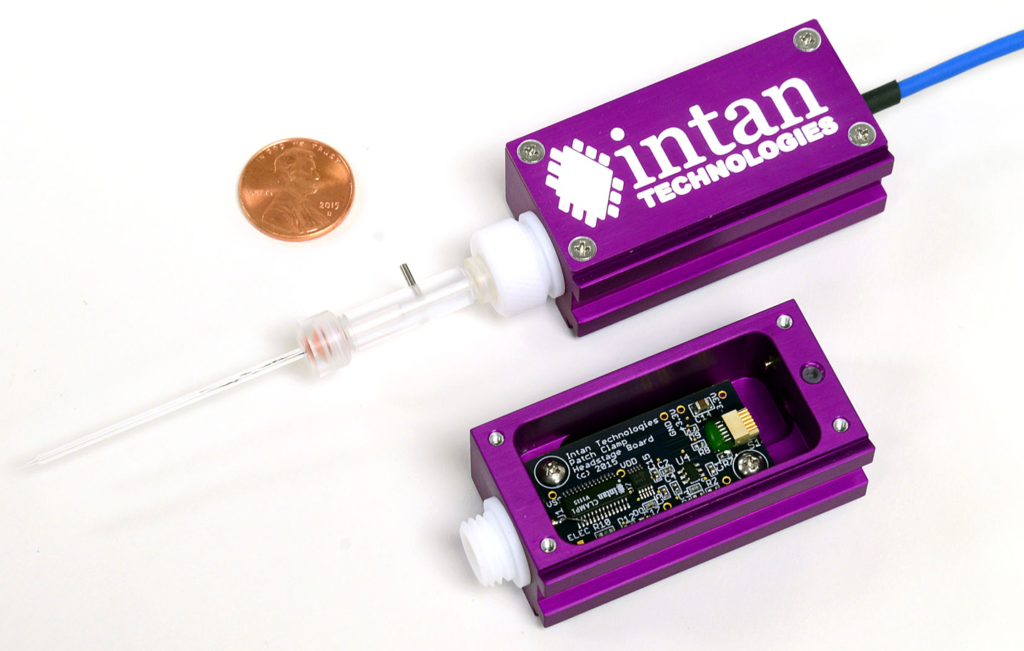Intan CLAMP Patch Clamp Amplifier Systems

Multiple people have asked for a discussion of Intan CLAMP patch clamp amplifiers. For those who are unfamiliar with them, they’re miniaturized patch clamp amplifiers. What looks like a headstage, is actually an entire amplifier. So that cable out the back of the “headstage” is actually a digital signal, and thus less susceptible to noise. Here’s a blurb from their website that puts it clearly:
The CLAMP chips from Intan Technologies combine all analog patch clamp circuitry and many digital control blocks on a single chip, permitting the construction of Intan-powered digital headstages. A small circuit board containing an Intan CLAMP chip and a small number of support components form a complete patch clamp amplifier with a purely digital interface. The Intan-powered digital “headstage” is actually a complete, miniaturized patch clamp amplifier.
This is nice technology.
Pros:
It’s low noise (similar to MultiClamp 700B, but not as low as the Axopatch 200B).
It’s open source.
It’s multi-platform.
Cons:
No series resistance compensation.
For some people, that con is a deal-breaker. For current clamp recordings, this isn’t a concern (there is a bridge balance circuit), but for voltage clamp experiments, it is a concern.
I asked intan’s Reid Harrison about potentially adding this feature, and here’s what he wrote:
No, there are no plans to add series resistance compensation in the future. Basically, we can’t do this with our microchip, and we can’t emulate it in software in real time. In principle you could adjust the voltage clamp level in real time depending on the measured current, but our voltage clamp DAC has a step size of 2.5 mV, which is too large for this type of “fine tuning”.
By the way, if you don’t already know, Reid Harrison has academic neuroscience roots. His communication was quick, clear, and candid. I wouldn’t hesitate to do business with him. Plus all of their pricing is on their website. You can even download their software before buying anything and look at the code if you like. It’s a refreshingly open company.